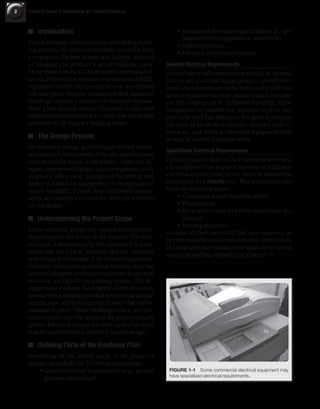This document provides an overview of the electrical design process for commercial and industrial buildings. It outlines the key steps, which include understanding the project scope, defining the components of the electrical plan like general/specialized loads and lighting/distribution systems, determining applicable standards, and creating the electrical plan. The goals are to identify the necessary information to convey to inspectors and trades, and to ensure the design conforms to building codes and industry standards.








